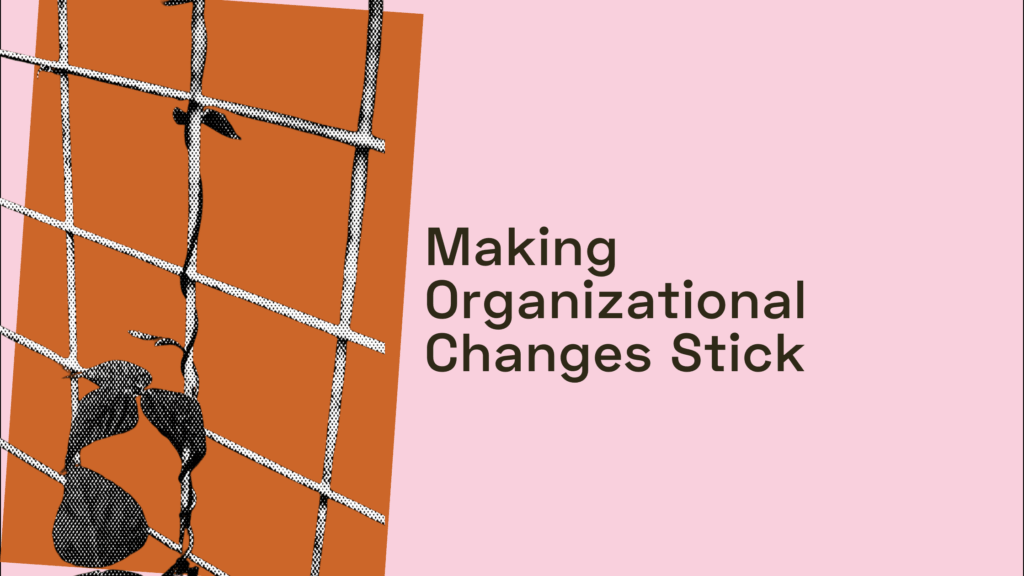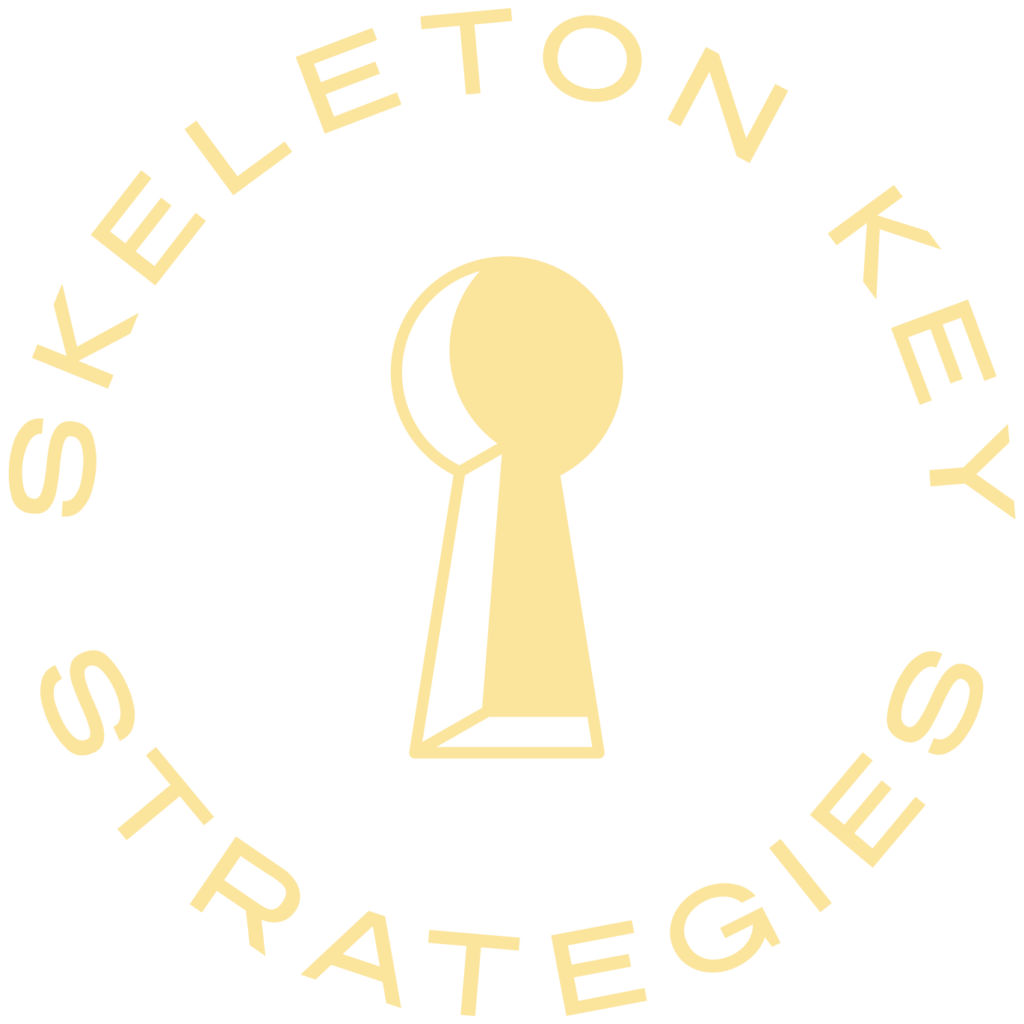I’ve been supporting organizations and departments through major change for years—creating new workflows, transitioning from outdated systems to ones that seemingly fit a need, often not knowing what the best solutions were. Through much trial and error, I found a groove.
But no matter how well I thought I planned a project or campaign for success, something always got in the way.
Eventually, I realized these obstacles had little to do with the quality of the systems and processes themselves, but how we use them—and how change affects every single person involved differently. It was only then that I understood: how we change together as a collective hinges more upon individual change than anything else.
What Makes Change Sustainable?
Throughout a career devoted to achieving lasting social change, I often harped on the concept of “sustainability.” I’d say to myself (and many others): yes, we all want to achieve some kind of change—personally, socially, politically—but how can that change be sustained? How do we prevent ourselves from falling back into the same bad habits?
Although I had been engaging in practical change management, I wasn’t introduced to a formal “change management” practice until joining Skeleton Key Strategies. Principals Simone and Justin supported me in pursuing formal training through ProSci.
I was sobered to realize that the way I was taught to traditionally plan, execute, and analyze projects was missing this major element. The training took what I’d learned on the ground—guiding teams, aligning stakeholders, helping people adapt—and gave it language, structure, and a framework I can apply at scale. I’m excited to lead change initiatives with this structured approach, with individual success as the litmus test for a successful project, and the data to back it up.
The ProSci Methodology
Change management is a customizable framework for supporting individuals through obstacles, clearing the way for both project and individual success—with sustainability as the guiding star.
You always hear the phrase “a chain is only as strong as its weakest link.” To me this is a powerful way of thinking about changes involving a group of people. The ProSci methodology for change management allows you to adjust your approach based on where the first weaknesses (or risks) appear in your “chain” of people.
The ProSci methodology provides structured ways to assess individual readiness (through frameworks like ADKAR—Awareness, Desire, Knowledge, Ability, Reinforcement), measure project health, and track progress through three general phases: Prepare the approach, Manage the change, and Sustain the outcome.
Rewriting Project Goals Through a Change Management Lens
In project management roles, we’re often taught to focus on managing stakeholders and keeping projects on track to realize the goals laid out for us.
The problem? These goals are usually not people-focused. They’re typically metrics for increased revenue, user adoption, or optimizing a workflow. While these are all valid goals, they don’t center the primary factor that determines whether they’ll succeed: people.
Strategy built without including those who will be most impacted is doomed to create a future state where success is not fully realized, or fails completely.
Rewritten through a change management lens, traditional goals become far more actionable. Instead of a general organizational goal to “increase revenue,” a goal might become: “Drive adoption of new processes and tools that enable teams to identify and capitalize on revenue opportunities more effectively.”
Instead of “increase user adoption,” a goal could expand to: “Increase user adoption through targeted communication, training, and engagement strategies that build confidence and competence with the new system or process.”
See the difference? This level of specificity builds the change management plan for you. It forces you to identify what specific obstacles your team is facing and what strategies would best address those obstacles. It removes the trial-and-error guesswork that often comes with goals written by people who aren’t involved in the day-to-day work and don’t have the same frame of reference as those who will be directly impacted.
Change management, in conjunction with the principle of appreciative inquiry, puts Skeleton Key Strategies in a unique position to help stakeholders identify not only blockers but also opportunities, and build a plan to address these at the onset. This on-the-ground approach ensures the foundation for success is laid before the project even begins.
Why This Matters for Your Next Initiative
If you’re planning a technology implementation, organizational restructure, or program redesign, consider this: are your goals centered on outcomes, or on enabling the people who create those outcomes?
The difference determines whether your changes stick—or whether you’ll be back where you started six months from now.
At Skeleton Key Strategies, we help nonprofits build change initiatives with people at the center, using proven frameworks to support individuals through transitions while keeping your mission front and center.
Ready to explore how change management could strengthen your next project? Let’s talk. Send us a note using the contact form below, or email us at greetings@skeletonkeystrategies.com.



